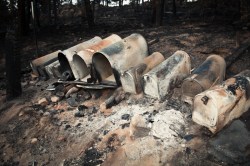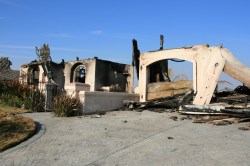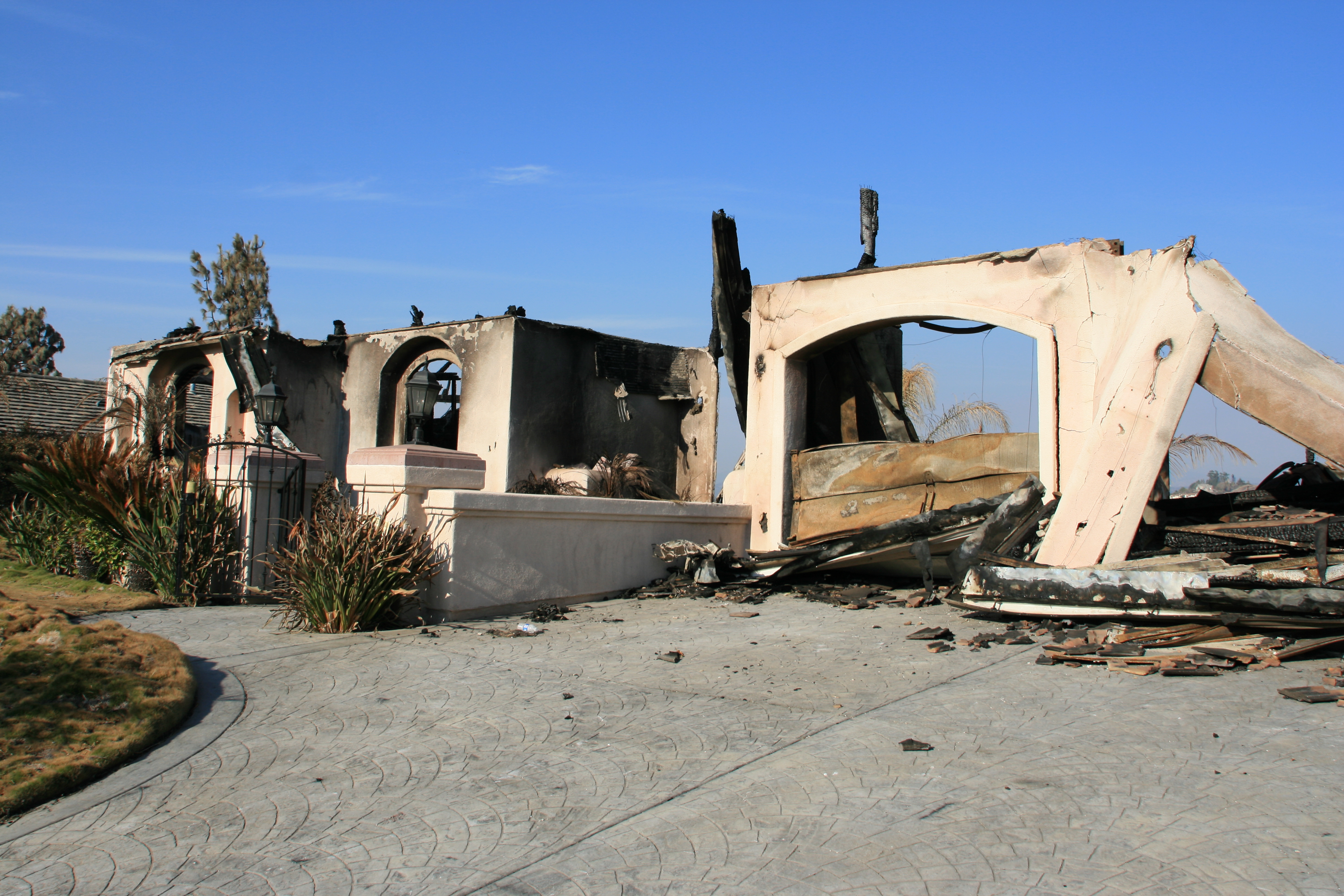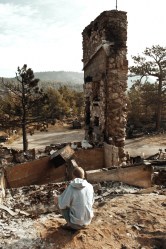
Jeff RuaneMailboxes destroyed in the 2010 Fourmile Canyon fire outside Boulder, Colo.
Last year’s wildfire season was one of the worst on record, and whether or not this year’s tops it (a likely outcome), it’s already off to a horrifically tragic start: 19 elite firefighters perished in a blaze outside Prescott, Ariz., on Sunday — the most to die fighting a single wildfire in 80 years. Even before the deadly Yarnell Hill blaze began, the usual suspects were asking: What does climate change have to do with wildfires? James West of Climate Desk addressed this maddening question a couple of weeks ago and The New York Times addresses it today (and David Roberts addressed it last year).
But there’s another human-caused problem making wildfires worse: the exurbs. Or, to use the technical term, the “wildland-urban interface” or WUI, where development meets and mingles with fire-prone wildlands. The New York Times describes such areas, which include Yarnell, Ariz.:
Those expanding communities, with rural views but more urban economies, have been the focus of concern among federal and state officials for a decade or more. While such regions are more plentiful in the East, it is in the areas west of the 100th longitude, reaching from West Texas and the Dakotas to the Pacific Ocean, where the natural aridity, increasingly exacerbated by climate change, makes fires a common threat.
In the West in the 1990s, more than 2.2 million housing units were added in these fire-prone areas, according to testimony by Roger B. Hammer [PDF], a demographer at Oregon State University and a leading authority on the issue. Speaking to a House subcommittee in 2008, he called this a “wicked problem,” and predicted an additional 12.3 million homes would be built in such areas in Western states — more than double the current numbers.
According to a U.S. Forest Service Study [PDF], one-third of all U.S. housing units now sit in the WUI, and the total area classified as WUI increased by 18 percent between 1990 and 2000. These neighborhoods, bucolic in theory with their combination of suburban amenities and easy access to wilderness, have become ubiquitous in the West, the study reports:
In the Rocky Mountains and the Southwest, virtually every urban area has a large ring of WUI, as a result of persistent population growth in the region that has generated medium and low-density housing in low-elevation forested areas.
Think of the subdivisions wiped out by Colorado’s Waldo Canyon fire last year, or of the canyon outside Santa Barbara, Calif., where Grist writer Susie Cagle’s family home once burned to the ground. Wildfires in and of themselves are a natural and essential part of forest ecology, but more people living close to flammable wilderness means more people carelessly tossing smoldering cigarette butts or doing a shoddy job of putting out their campfires. From 2001 to 2011, an estimated 85 percent of wildfires in the U.S. were caused by people. And wooden houses, not to mention the aesthetically pleasing but non-native landscaping that often surrounds them, provide extra fuel for fires once they do start.
Fires that threaten to destroy homes end up costing much more to fight than those far from populated areas; according to the Forest Service study, there’s a “positive correlation between firefighting expenditures and the presence of housing and private lands.” Plus, as Outside Online points out, there’s extra pressure to stop a fire that puts property and human lives at risk, as so many more wildfires do these days:
In wildland firefighting, as with all firefighting, there’s nothing more important than protecting homes from destruction, but in the past decade, more than 20 million people have moved into the lands that will eventually be threatened by wildfire. Was … the field general in charge of making calls on the ground [while battling the Yarnell fire] more willing to expose his crew to risk because houses were at stake?

slworking2A house destroyed by San Diego’s 2007 Witch Creek fire.
Ironically, the poor land-use planning that puts spread-out neighborhoods of sprawling homes right up next to fire-prone forests, exacerbating the potential for fire damage, is the same poor land-use planning that traps Americans in the kind of energy-intensive lifestyle that exacerbates climate change. For the most part, these WUI communities tend to represent the opposite of the kind of sustainable design we must strive for to reduce carbon emissions. They’re not dense or walkable or served well by public transit; they’re overwhelmingly residential, meaning you have to get in your car and drive just to get a roll of toilet paper or a quart of milk. And think of the energy cost of air-conditioning a five-bedroom house. Simply put, exurban development patterns worsen climate change, and they also make residents more vulnerable to one of climate change’s myriad indirect effects.
All this is not to demonize those who live in such places, because settling in the WUI has obvious appeal. If I lived in North Bend, Wash., for instance, I’d be steps from some of the region’s best hikes, and I might even be able to afford my own one-bedroom apartment. The Forest Service report outlines steps these communities can take to adapt and prepare for an increased threat of wildfires — educating residents about fire risk, removing flammable vegetation, changing building materials, planning new development to include better evacuation routes, etc.
But the question remains: Should we be building in such areas at all anymore (especially if living there necessitates a carbon-intensive lifestyle)? The same could be asked about building in flood zones or on steep seaside cliffs. Maybe, instead of pushing development ever further into the wilderness, we’d be better off inviting it back into the city.




